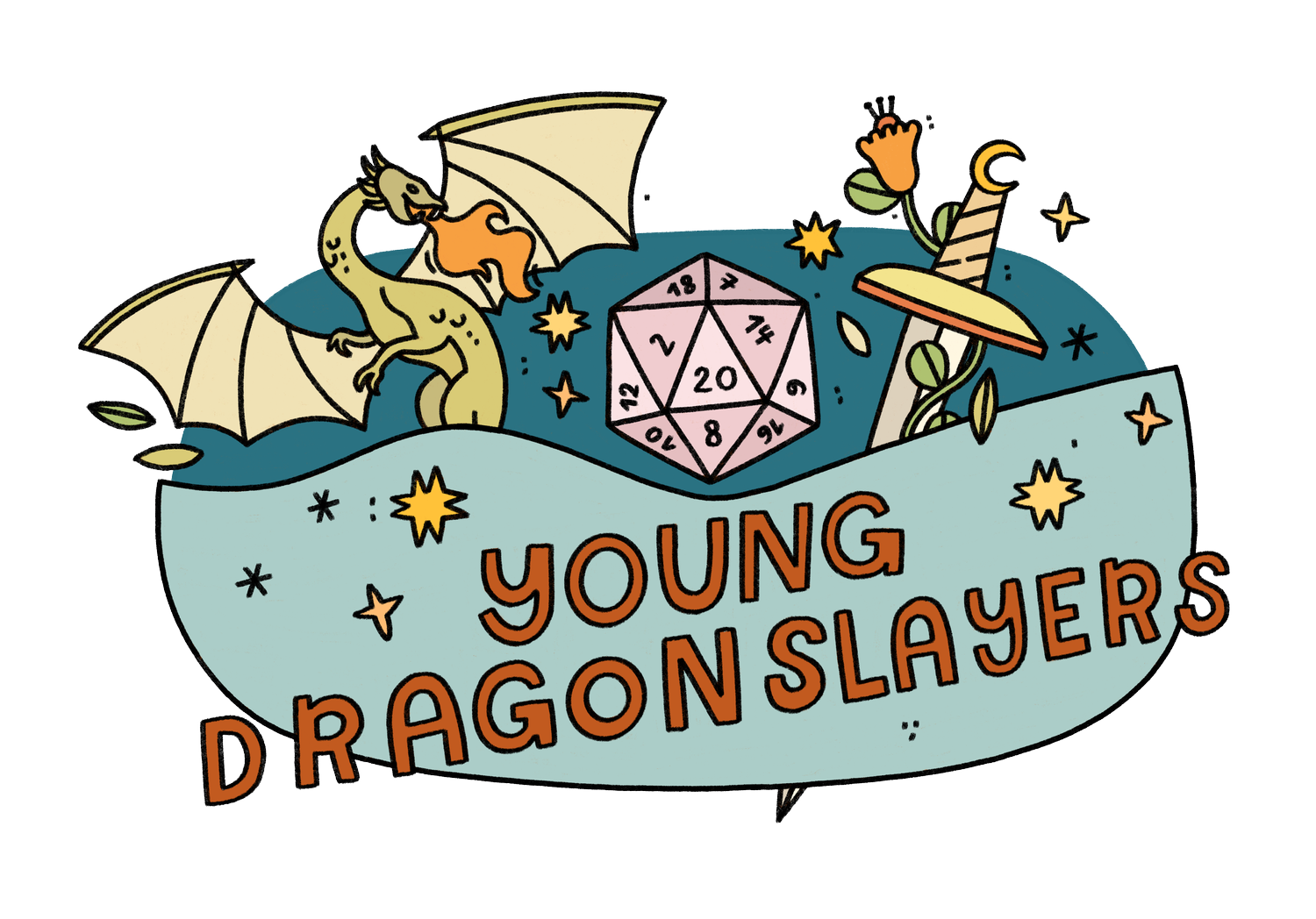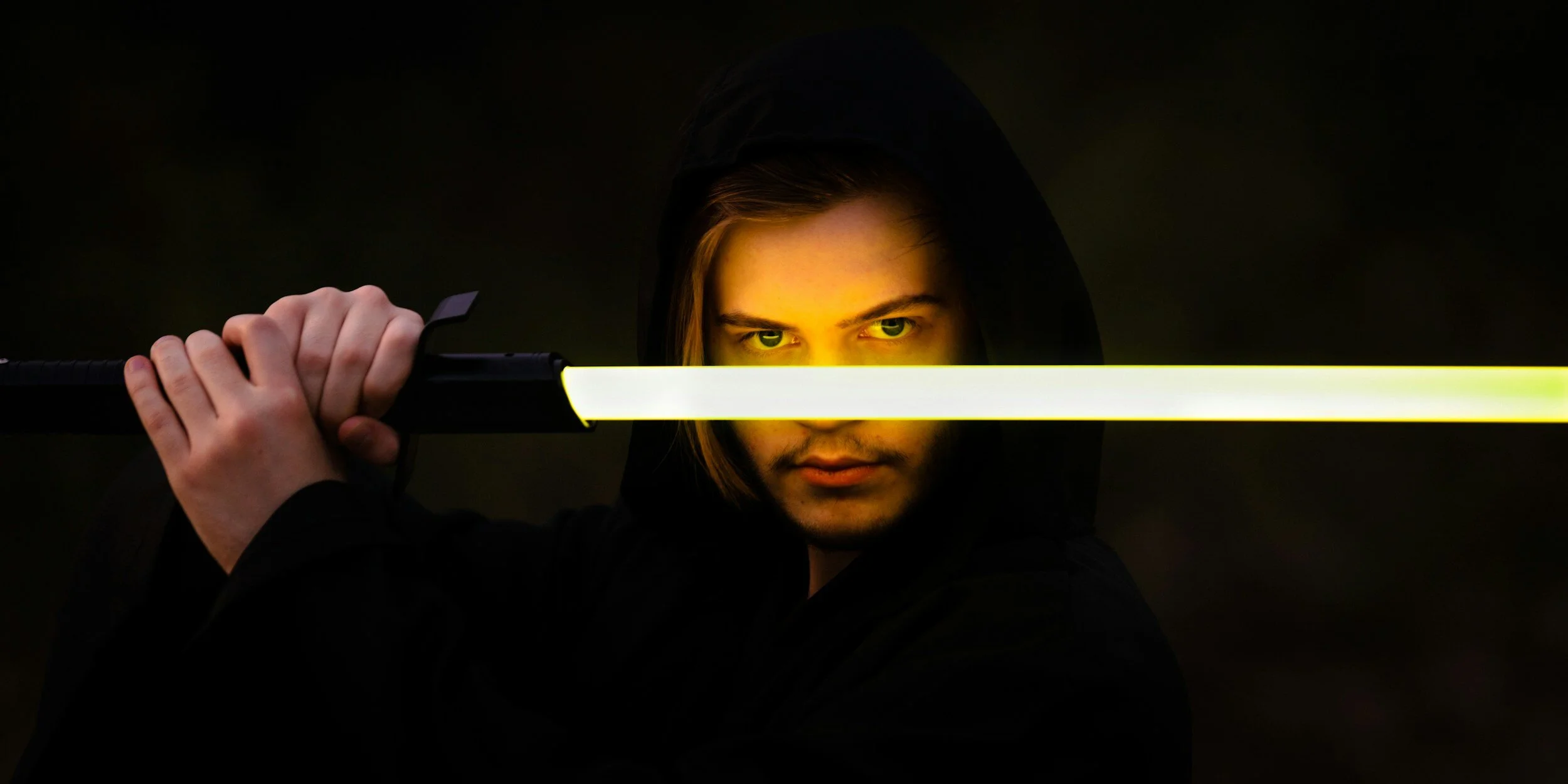3 Ways to Make A Star Wars-Inspired Force User in D&D
Star Wars is filled with heroes fighting to save the day in a wide world of mystery and wonder - sounds a lot like Dungeons & Dragons to us! One of the coolest parts of Star Wars is the lineup of awesome Force users whose mastery of the Force lets them wield a lightsaber, summon Force Lightning, or lift an X-Wing with their minds. There are a ton of different ways to create a character with Force-like abilities in Dungeons & Dragons: custom classes, special spells, magical items, and more. But the easiest place to start is by choosing a class - what kind of abilities your character has (Bard, Cleric, Wizard, etc) - and then selecting a subclass - which specifies those abilities further (Bard of Glamour, Cleric of Light, Divination Wizard, etc). Here are some places we recommend for you to start when creating your own Force user in D&D!
Note: Many of the clips embedded and linked to in this article contain PG-13 elements and major spoilers for the Star Wars series. The article itself contains minor spoilers.
Option #1: Channel Force Energy as a Monk
Some of the best scenes in all of Star Wars are the fights where Jedi, Sith, and other Force-sensitive characters channel the Force into expertise with a weapon (usually a lightsaber), deftly avoiding their opponent’s attacks with great agility and foresight, performing massive leaps and other feats, and even using superhuman abilities like mental manipulation. Much like these skilled warriors, D&D’s monks are in tune to an energy force called Ki that flows through all living beings (sound familiar?) and use it to perform amazing physical feats.
Monks get to choose a Dedicated Weapon; we recommend the Sun Blade, which is highly reminiscent of a lightsaber. With the Path-of-the-Kensei subclass, sun-blade users can channel their Ki into their weapon, giving them incredible damage, accuracy, and the ability to parry incoming attacks (like Yoda fighting Count Dooku). Monks also have incredible control over their bodies: they can attack with a Flurry of Blows (like the four-armed General Grievous fighting Obi-Wan), avoid attacks with Patient Defense and Evasion (like Chirrut fighting Stormtroopers), and even defy the laws of physics: fighting gravity with Slow Fall and jumping great distances with Step of the Wind (like Darth Maul fighting Obi-Wan and Qui-Gon Jin).
Monks can also use their connection to Ki to focus their mind in the same way experienced Force users can. Higher-level monks can also deflect incoming missiles, like blaster fire, and, with the Way of the Astral Self subclass, can even redirect lightning (like Mace Windu does with Force Lightning). Of course, monks can also use their mental acuity to perform classics like the Jedi Mind Trick, with abilities like the Way of the Ascendant Dragon’s Draconic Presence and the Way of the Cobalt Soul’s Extort Truth.
Option #2 Play a “Chosen One” as the Sorcerer Class
One interesting element of the Force is the way it can spring up in certain people - passed down in their family (like Kylo Ren), appearing out of nowhere (like Anakin Skywalker), or triggered by an awakening event (like Finn). These appearances can change the course of the galaxy and force their recipients to choose between using their powers for good or for evil. Similarly, D&D’s sorcerers received magic powers through a bloodline, a blessing, or, in many cases, a mystery. Magic flows out of these sorcerers naturally, and they must work to harness it like those with raw Force powers.
Sorcerers use their magic to control their environment; they can stop a person in their tracks, create invisible walls, and move large objects around (like the adorable Grogu lifting a Mudhorn in the air). Sorcerers also channel their magic into controlling minds (like Asajj Ventress turning Savage Opress to her side); they can control others’ emotions, read minds, and even deal psychic damage to their enemies. Sorcerers, especially those of the Aberrant Mind subclass, can also use their minds to send messages, form telepathic bonds, and even teleport (like Rey and Kylo can with their mental connection as a Force Dyad).
Sorcerers can heal wounds with magic, casting spells like Greater Restoration and Cure Wounds, and using subclass-specific healing abilities (these work much like Rey and Grogu’s Force Healing abilities). Sorcerers can also evade death with the spell Death Ward (like Emperor Palpatine did…somehow). Sorcerers can also emulate Palpatine’s ability to summon Force Lightning; this can be done with spells, like Lightning Bolt or Chain Lightning, and class abilities, like the Storm Sorcerer’s Heart of the Storm, the Shadow-Magic Sorcerer’s Storm’s Fury, and the Draconic-Bloodline Sorcerer’s access to Bronze Dragon’s lightning manipulation.
Option #3: Explore the Dark Side of the Force as a Warlock
Many Force users come into their abilities by dedicating themselves to the study of the Force, typically through following the tradition of the Jedi Order and/or becoming a Padawan under a skilled Force user. This involves devotion to both the Force and their master’s techniques, whether they follow the Light Side or the Dark Side. D&D Warlocks have a similar devotion (only they have instead chosen a pact with a powerful magical being) and learn combat abilities along with their magic. Many of these come from Eldritch Invocations, special abilities for warlocks that reflect their pact.
Most warlocks who pursue increased combat abilities do so by studying the Pact of the Blade. These warlocks can summon their Pact Weapon into their hands (like Luke recalling his lightsaber in the Wampa Cave), and strategically pick Eldritch Invocations like Thirsting Blade or Improved Pact Weapon to increase their abilities with this weapon - again, we recommend the Sun Blade, which is highly reminiscent of a lightsaber. Other Eldritch Invocations use spells that mimic Force-users agility in combat, such as Trickster’s Escape, which gives freedom of movement, Otherworldly Leap, which gives fantastic jumping ability, and Ascendant Step, which lets warlocks levitate themselves in midair!
Warlocks can also use magic to affect the minds of others. They can take Invocations like Bewitching Whispers, which compels creatures to obey them, Dreadful Word, which can confuse others, and Beguiling Influence, which increases deception and persuasion abilities (like Obi-Wan using Jedi Mind Trick on stormtroopers). The Invocation Beast Speech lets some warlocks influence animals (like Ahsoka Tano calming the Purrgil). But warlocks can also tap into magic to see things with their minds (like Luke using the Force to land his missiles on the Death Star), or even predict the future (like Force Visions).
What Star Wars-Inspired D&D Character Will You Play?
This is just scratching the surface of Dungeons & Dragons character abilities. (We didn’t have time to theorize about how Jar Jar Binks could be a Way of Drunken Master Monk or how Grogu’s chaotic hold on the Force is totally just the Wild Magic Sorcerer!) There are so many options for you to create your own character and send them on quests like the protagonists of Star Wars.
If you’d like to check out D&D, and get help putting together your perfect character, consider joining our tween and teen groups, where nerdy Dungeon Masters run online games with epic adventures, wild plots, and some good old-fashioned dramatic battles. We’d love to see you there!


